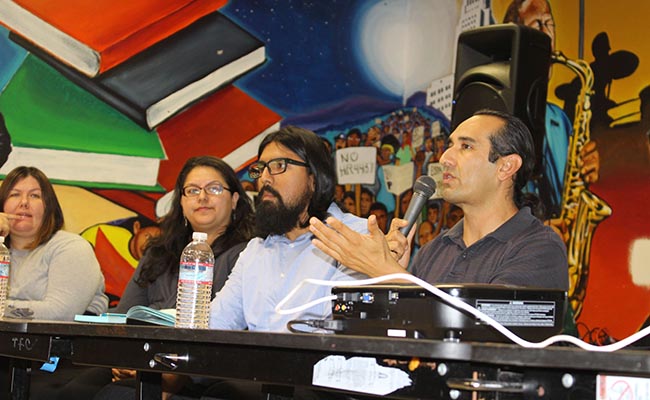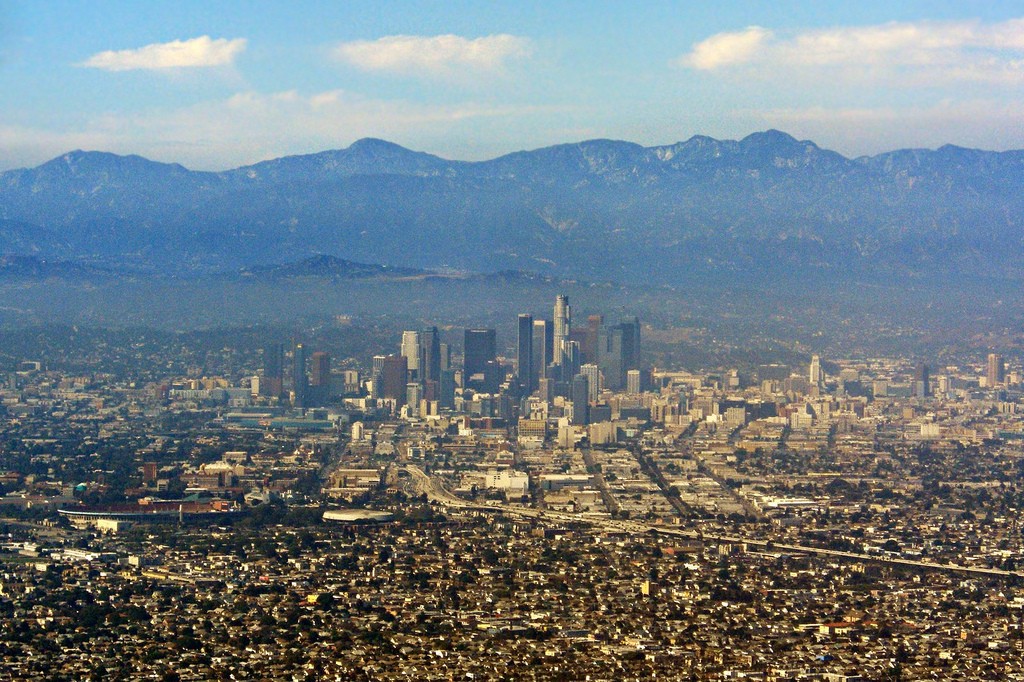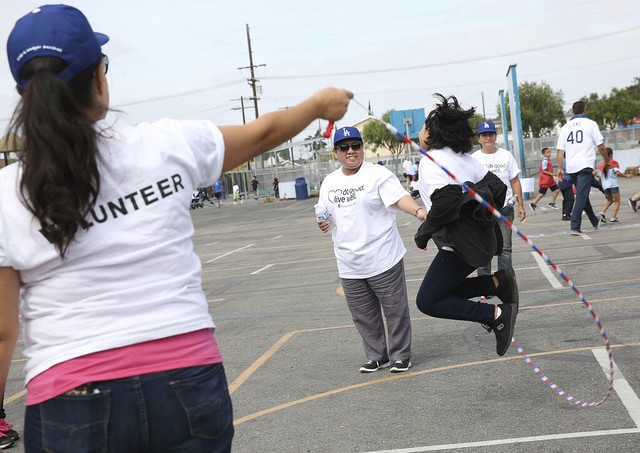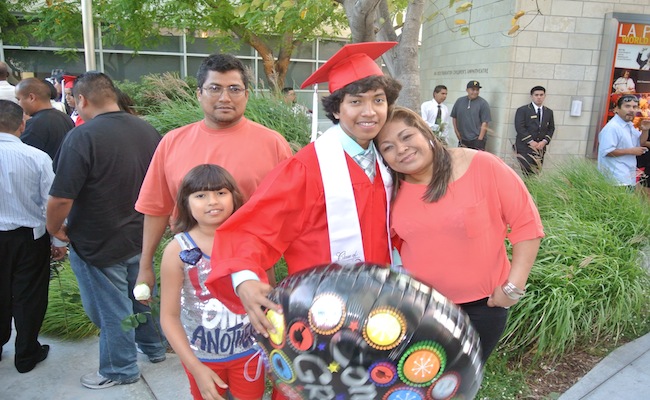When Jonathan Marcelino’s parents told him he could either own a computer or a cell phone, the decision was not difficult for the 17-year-old to make.
As the eldest of four children born to Mexican immigrants living on a tight budget in Nickerson Gardens, a Watts public housing project, Marcelino knew that although he would have liked to have a phone to regularly text friends, a computer would be more productive.
“Regardless of where I go, I want to study computer science,” he said. “I want to do cool stuff, make money and then do a nonprofit. That’s why you don’t see me running with a phone.”
The lack of exposure to technology and its practical applications in daily life is a reality many students living in and around South Los Angeles face, Marcelino said.






















